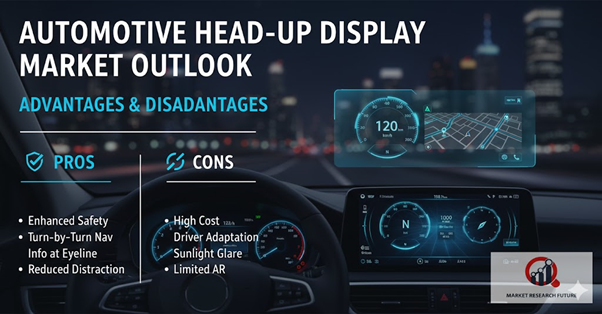
Automotive Head-Up Display (HUD) Market Overview
The growing demand for automobiles across different countries is driving the demand for different electronic components, including head-up displays. This promises to uplift the valuation of the automotive head-up display market from USD 1.79 billion in 2024 to USD 8.85 billion by 2035. The progress is set to adhere to a CAGR of 15.62% through 2035.
A head-up display (HUD) projects information onto a car’s windshield or a small transparent panel within the driver’s line of sight, serving as both an information tool and a safety feature.
It allows drivers to access key data without looking away from the road. Originally developed for fighter jets in the 1940s, HUD technology has evolved significantly, now offering clearer visuals and more detailed information with each generation.
Types of Automotive Head-Up Displays
- Projection-Based HUD
Projection-based systems use LED lights or lasers to display data such as vehicle speed, navigation guidance, and fuel consumption on a specially treated windshield section. These setups ensure high clarity and minimal light leakage, even in dark driving conditions.
- Reflection-Based HUD
Reflection-based systems rely on a digital display that reflects information on a small transparent glass panel. While they are more affordable and easier to install, these HUDs tend to have lower brightness and clarity in low-light conditions. They are widely available as aftermarket plug-and-play accessories, often using smartphones and apps to project the data.
Key Factors to Consider Before Buying a HUD
- Cost: Price often reflects quality. While mobile HUD apps are affordable, they lack advanced features. Consumers should compare HUD options based on required functionality and budget.
- Display Size: The ideal display size depends on user needs. A 3-inch display may suffice for basic information like speed, while 5-inch displays provide a broader view for navigation and alerts.
- Visibility: Brightness and contrast are crucial. A good HUD should remain clearly visible in all lighting conditions and include manual brightness adjustments.
- Features: Drivers should select features like speed, RPM, navigation, fuel alerts, battery charge, and warning indicators according to their preferences.
Advantages of Automotive Head-Up Displays
- Consolidates multiple data points for quick and easy access.
- Reduces driver distraction by projecting essential information directly in view.
- Enables faster eye response time, improving reaction and safety.
- Modern HUDs are affordable, with many advanced options available for a few hundred dollars.
Disadvantages of Automotive Head-Up Displays
- Limited integration in some vehicles; additional calibration or setup may be required.
- Distraction risk from flashing text or voice alerts if not properly configured.
- Image quality may deteriorate with vehicle vibrations or improper alignment.
- Not compatible with vertical windshields found in trucks, buses, or vans.
Market Outlook
The market is witnessing strong adoption from automakers such as Audi, BMW, Mercedes-Benz, Toyota, Ford, Hyundai, Jaguar, Kia, and Volvo, among others. As the focus on driver safety, convenience, and in-car technology continues to rise, automotive HUD systems are set to become a standard feature in next-generation vehicles.